
TALE LION’S THE CESJDS / September 2022 / Volume 40 Issue 1 New wellness department pg. 4 Toxic Television pg. 10 Best Beaches near DC pg. 26 zman kodesh or zman chofesh? Staff aims to make daily prayer relevant to today’s teens
Welcoming wellness: Guidance department makes changes to support more students
Rising in the ranks: Staff take on new positions for the upcoming school year
Argentine Adventures: Students tour Argentina and experience foreign Jewish culture
— opinion —
Editorial: Cultivating Jewish Roots
Procrastination nation: Productivity tips for the new school year
Toxic television: Media created for teens displays a tolerance toward abusive relationships


features
Traveling teachers: Educators spend their summer in a variety of places
Beinart bakery: Parent Janice Beinart begins a baking business “JLB Cookies”
Influencers: Slap or Cap?: Social media creators can both benefit and harm teens

sports
Summer, sun and sports: Stu dents participate in the Maccabi Games
Pickelball Phenomenon: A look into the new sport
Fall sports sneak peak: Head coaches and students preview the upcoming season
Zman Kodesh or Zman Chofesh?: Staff aims to make daily prayer relevant to today’s teens
We all scream for ice cream: Breakdown of the best local ice cream shops
Hit replay: Summer concert highlights ranging from Pitbull to Halsey
Seas the day: A guide to nearby east coast beaches that are perfect for a day out in the sun
Dear Readers,
We are so excited to publish our first issue of the school year! As the year be gins to pick up and the high holidays are approaching we wanted to take the time to reflect on the past year and thank The Lion’s Tale staff for their hard work on this issue and their willingness to sacrifice some of their last free moments before school starts.
The theme of the upcoming Jewish holiday Yom Kippur is reflection. As we enter into this new school year, we wanted to place an emphasis on this in order to highlight our successes and assess our failures. While the new school year can be daunting, it is important to reflect on past experiences and remember that every thing always works out in the end.
There are many stressful moments during production. We have had to learn how to deal with lost files, last minute ed its and so much more. However, reflecting on these past moments has taught us how to keep composure and work through these stressful times.
Not only do we need to reflect on the stressful moments, but we should also remember our accomplishments because they remind us of how we can succeed.
This summer, many of our editors went on exciting trips, college programs and community service teen tours, all over the world. While it may be hard to put these experiences aside and enter the school year, it is important that we contin ue to reflect on those times. Reflecting on these fun experiences will help ease some of the stress during the year. Before we know it, summer will be back again and we will be wrapping up another year.
For many people, it may be easy to fall into old habits and get lost in moun tains of schoolwork and busy schedules. Keeping a piece of summer with you throughout the year will remind you of the reward at the end of the year. Even in the toughest of times, there is always a light at the end of the tunnel.
We hope that you take this period of reflection think about both your mistakes and your proudest moments from the past year, and remember that everything will always work out in the end.
Have have a great first week of school and enjoy our newest issue of the Lion’s Tale.
Sincerely,
2 April 2022
news
04 05 06
08 09 10
Inside the Issue opinion
in-depth 12
16 17 18
20 21 22
24 25 26
a&e
Trend Takeover What’s trending online 1. 2. 3. Deleting social media Instagram photo dumps Europe vacations
The Lion’s Tale Staff



Editors-in-Chief
Daniela Abrams & Eitan Malkus
Managing Editors, Copy Harry Davidson & Lily Rulnick (asst.)
In-Depth Editors
Zara Ducker & Simon Albert (asst.) News Editors
Adin Halbfinger & Ella Waldman Opinion Editors

Ellie Fischman & Jonah Beinart Features Editors
Lena Nadaner & Ari Werbin-Gradel Sports Editors
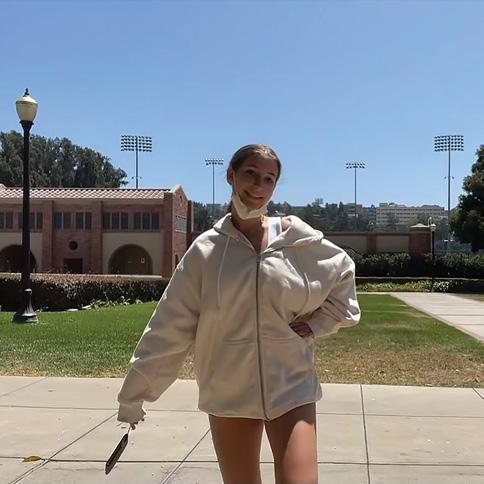

Kaylah Goldrich & Aaron Waldman
Arts and Entertainment Editors
Ella Kotok & Lilli Libowitz Editorial Cartoonist
Taylor Polonsky Reporters
Kaelyn Rashti, Ellie Levine, Cati Werbin-Gradel, Yaeli Greenblum, Stella Muzin, Simon Albert, Sasha Karasik, Sam Berns, Reyut Wasserstein, Nini Panner, Max Schwartz, Matthew Steindecker, Matan Silverberg, Julia Rich, Jessica Rosenberg, Jared Schreiber, Gigi Gordon, Elliot Bramson, Ari Kittrie, Ari Blumenthal, Aliza Bellas, Alana Udell Staff Adviser
Jessica Nassau Adviser Emerita
Susan Zuckerman
Editorial and Ethics Policy
As the student newspaper of the Charles E. Smith Jewish Day School, The Lion’s Tale is a public forum for student opinion and expression. All content is determined by students. Its purpose is to inform the CESJDS community and to express the views of its staff and readers. The staff has made every effort to ensure the accuracy and objectivity of its news. Signed columns reflect the opinion of the writer; staff editorials reflect the opinion of the majority of The Lion’s Tale editorial board. The Lion’s Tale staff
welcomes letters to the editor and guest columns, all of which must be signed. The staff reserves the right to refuse any ma terial and may edit letters or columns for length, clarity, libel, obscenity and/or dis ruptiveness. All other contents copyright of The Lion’s Tale. All rights reserved.
Submissions may be emailed to jd slionstale@gmail.com, mailed to The Li on’s Tale or brought to room 320.
The Lion’s Tale is funded by The Simon Hirshman Endowment for the
tner-Levenson Endowment for the Upper School Cultural Arts and Student Publi cations, and community advertisements. The Lion’s Tale reserves the right to refuse advertisement for any reason. The staff will adhere to the ethics policies of The Society of Professional Journalists and the National Scholastic Press Association. The adviser will be held to the Journalism Education Association’s Adviser Code of Ethics.
-
The Lion’s Tale
Magazine 3
Upper School Newspaper and The Kut
Lily Rulnick went on a trip to Netherlands, Belgium, France and England for two weeks
Zara Ducker spent a month at UCLA learning about the Entertainment and Sports Industry in LA
Ella Kotok spent three weeks in Israel with her sleepaway camp friends
Welcoming Wellness
Ella Waldman News Editor
The Upper School guidance department is implement ing several changes for the 2022-2023 school year to help sup port and accommodate the needs of more students.
Former high school guidance counselors Rachel Soifer and Me lissa Gartner will serve as Co-Di rectors of the new Upper School Health and Wellness Center. In this position, they will be responsible for coordinating and overseeing health and wellness programming within the Upper School curricu lum.
“We hope to integrate health and wellness, education and experi ential programming, in all different areas, so it feels natural and posi tive and connected to what [stu dents are] already doing,” Soifer explained.
Soifer said that she and Gart ner have regularly visited the Eth ical Dilemmas class during their unit on death and suicide to host a discussion about depression aware ness and suicide prevention. The goal of the programming is to inte grate more of these conversations to what students are studying, rath er than interrupting the schedule, by pulling students out of class to discuss these important topics.
Another goal of the Health and Wellness Center is to host in-depth grade meetings focusing on the five pillars of wellness: academic bal ance, physical well-being, mental, emotional and social well-being, digital well-being and ethics, ser vice and leadership. During these retreats the health and wellness team will host workshops exploring each of these five pillars and how they connect with one another to support students’ wellness.
The intent behind this broad programming is to expand the reach that the guidance department has on students. The guidance de partment has previously found it

challenging to provide the neces sary support for the small group of students that were truly going through crises, as well as hold es sential proactive and supportive conversations with the wider Upper School population.
Thus, Dean of Students Ros lyn Landy explained that the new guidance approach will be to ad dress mental health education as a pyramid. The bottom or widest tier of the pyramid will be focused on by the health and wellness center to provide support for everyone, not just those who have diagnosed mental health challenges.
“As many of us are aware, there has been a sharp increase in incidents of mental illness and emotional dysregulation recently,” Landy said. “While some of this can be attributed to COVID, it is also, in part, a result of teenagers trying to do too much, striving to be perfect, striving to take the most advanced courses, striving to be straight A students while ignoring their men tal health and wellness and taking time to thrive. Our goal is to edu cate the student body by address ing balance, nutrition, sleep and following your passion.”
The middle tier will consist of more individual work, and it will focus on students who have small er challenges, whether that is a bad grade, an argument with a friend or something slightly more seri ous. In those situations, freshman and sophomores will be directed to new high school counselor Marnie Lang, and junior and seniors will be directed towards Landy who will serve as their guidance counselor.
“The newest kids coming in, I’m going to be meeting in small groups within the first month and a half, hopefully, during communi ty time, so that I can get to know everyone and see everyone within school,” Lang said. “I’ll be out and about, and whenever I can, and meeting with all the students indi vidually if they feel like they need
The demands are greater, the rates of depression and anxiety have sky rocketed and we are focused on educating and supporting all of our students and not just a small percentage of our student body.”
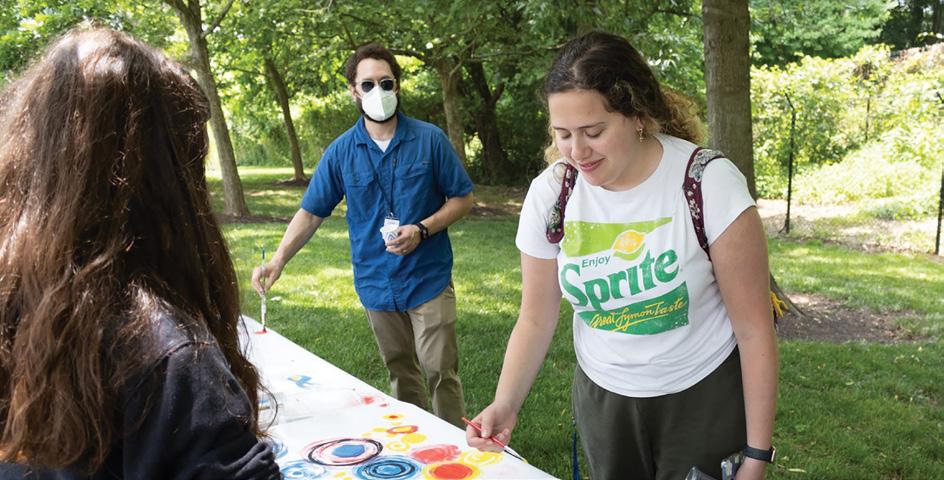
-Dean of Students Roslyn Landy
help with teachers, connecting with kids, if they need any help in, in or out of the classroom, and just work ing with the team to make sure that everyone is successful in school.”
Finally, the top tier, which is made up of a small group of stu dents who are struggling with more serious issues, will be managed by a student review committee made up of several faculty members who will evaluate as a team how to help those individual students.
Additionally, some of the lo gistical demands that Gartner and Soifer previously addressed, such as scheduling and add-drop forms, will be handled by other members of the faculty. Academic Dean Ai leen Goldstein will handle the add-drop forms for the freshman and sophomores while the college counseling team will handle them for the junior and senior classes.
Overall, the changes the guid ance department are making are all to accommodate the complex and ever changing needs of students, and to ensure everyone is receiving the necessary support.
“There is a very big difference from [what there] was 45 years ago, 25 years ago, and even five years ago,” Landy said. “The demands are greater, the rates of depression and anxiety have skyrocketed and we are focused on educating and supporting all of our students and not just a small percentage of our student body.”
—news —
Guidance department makes changes to support more students
Students play with therapy dogs and paint at a wellness event. last spring
4 September 2022
Photos by Alec Silberg, yearbook
RIsing in the Ranks
Staff take on new positions for the upcoming year
Victoria Simonetti, Head Athletic Trainer, Assistant Director of Athletics


As incoming Assistant Director of Athletics, Tori Simonetti looks forward to adding a new title to her existing role of Head Athletic Trainer. Simonetti has always been passionate about helping injured athletes recover, but has also wanted to explore new branches of athletics. Simonetti expressed interest in athletic directing back when she firstinterviewed with Director of Athletics Becky Silberman for the Head Athletic Training position. In her new role, she hopes to get more students involved in sports, increase numbers on JV and middle school teams, and interact more with coaching staff. No matter her position, Simonetti prioritizes her relationships with athletes and believes she can always develop stronger bonds with them.


Robbie Shorr, High School Math Teacher & High School Jewish Life Chair
High school math teacher Robert Shorr looks forward to taking on the position of High School Jewish Life Chair. As Jewish Life Chair, Shorr is excited to organize grade-wide Shabbatonim and continuing to coordinate Kabbalat Shabbat divrei torah. Most of all Shorr is thrilled to continue the school’s traditional Purim festivi ties. He appreciates the energetic and positive environment in school on that day, and is excited to put his spin on, in his opinion, one of the best days of the school year. Shorr intends to help students disconnect from their technology and stresses in order to connect to something more important: their Jewish commu nity. He is excited to take on a role in which he can contribute to the overall mission of the school.
Tori Ball, High School Dean of Experiential, Leadership and Service Learning & Assistant Dean



After serving as Assistant Dean for a year, high school math teacher Tori Ball is excited to begin her new position as Dean of Experiential, Leadership and Service Learning. After COVID, Ball appreciates the school-wide events where she can experience the amazing energy of the CESJDS community. In the past, she has enjoyed grade-wide Shabbatonim, Zimriyah, Purim and has felt especially proud of JDS during Kabbalat Shabbat on Fridays. She looks forward to incorporating more of these larger group activities as well as involving more students in programming, voicing their opinions and helping to achieve their visions for the school’s environment. She is energized to see what ideas students have in store, and to see groups get involved with leadership at the school. Something she stresses is that any idea, big or small, is important and should be heard.
Former Upper School Executive Assistant Jillian Pedone is now the Upper School nurse.
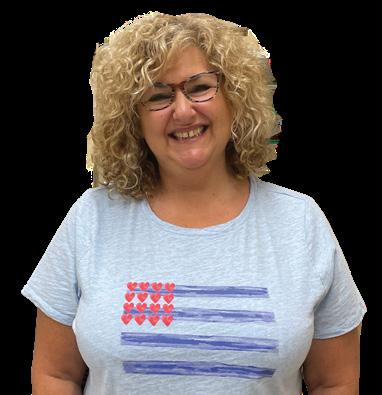
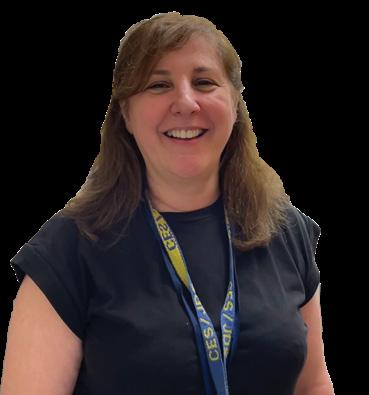
High school Jewish History teacher Dan Rosenthal is Jewish History Department Chair.
High school Hebrew teacher Anat Kaufman takes on the roles of High School Israel Engagement. Coordinator in addition to High School Liaison to Israeli Families


High school biology teacher Melissa Andrew takes on the role of Ninth Grade Dean.
High school history teacher Carl Atwood is now the History Department Chair.
Upper School ESOL Teacher Rebecca Resier takes on the role of Middle School New faculty mentor.

Middle school Hebrew teacher Liat Arditi Zarouk takes on the roles of Middle School Israeli Liaison and Middle School Israel Engagement Coordinator.

Upper School World Language Department Chair Dr. Silvia Kurlat Ares takes on the role of Middle School DEIJ coordinator.
High school physics teacher Raymond Hodges is now science department chair.
Aliza Bellas, Reporter
Photos by Ella Waldman, LT and Freed Photography
Upper School photography teacher Debra White-Dilworth takes on the role of High School DEIJ coordinator. The Lion’s Tale Magazine 5
Argentine adventures
Spanish students explore Buenos Aires, local culture
 Eitan Malkus Editor-In-Chief
Eitan Malkus Editor-In-Chief
After finals in late June, 11 CES JDS high school students spent a week touring Buenos Aires, Argenti na for the Spanish Cultural Immer sion Trip. After an inaugural trip in 2018, the school planned to run the trips once every three years. How ever, the trip was postponed in 2021 due to COVID-19 restrictions and instead took place this past summer.
In 2018, the trip was led by World Languages Department Chair Silvia Kurlat Ares and former Spanish teacher Deby Kijak. How ever, Kijak was unable to attend the trip this year due to family matters and Kurlat Ares was sidelined weeks before the trip because of a back injury. That left Kurlat Ares with a daunting task: finding two teachers that could attend the trip, at least
one of whom knew how to speak Spanish.
“One of Dr. Vardi’s suggestions was that we should pick up some one completely different: a male teacher with a different perspective who taught a different subject. That is how we ended up with [History teacher] Mark Buckley,” Kurlat Ares said. “Then we needed somebody who could play my part: somebody with experience in international travel, somebody that could bring balance to the trip and [English teacher] Nancy Wassner was gra cious enough to take my place.”
Wassner was also chosen as the second chaperone because of her experience studying the language, having taken a Spanish class for six years in middle school, high school and college. While she hadn’t used her Spanish in a long time, the trip
BY THE NUMBERS
230,300
Jews live in Buenos Aires, making it the 15th largest Jewish population in a metropolitan area
1860
The first Jewish wedding recorded in Buenos Aires, marking the be ginnings of their Jewish community
All information from jewishvirtuallibrary.org
offered her a chance to practice her skills.
“I did do some speaking on my own in Argentina: I spoke to people when I needed to buy stuff, I spoke to folks in the hotel, I spoke to the teachers at two schools that we vis ited who had organized our visit,” Wassner said. “Those were really good opportunities for me to use and build on my Spanish skills.”
While the trip includes histori cal and cultural experiences such as visiting the famous Recoleta ceme tery and the La Boca neighborhood, there is also a large emphasis on interacting with the robust Jewish community in Buenos Aires. Stu dents on the trip visited synagogues, Jewish neighborhoods and two Jew ish day schools in the area, Colegio Tarbut and ORT (Organization for Rehabilitation through Training).
6 September 2022
Photo by Nancy Wassner
“The students visited two schools: Tarbut, which is a school with which we already have a work ing relationship with, as they came to visit us a couple years ago, and [the students] are also going to visit ORT,” Kurlat Ares said. “ORT is an organization of international Jewish schools and there are ORT schools all over the world. It is a Jewish school, but in Argentina, the school has opened their doors to people who aren’t Jewish.”
Senior Yuval Klein, who has taken Spanish at JDS since seventh grade, was initially nervous to meet the students at the two Argentine Jewish schools because of the lan guage barrier.
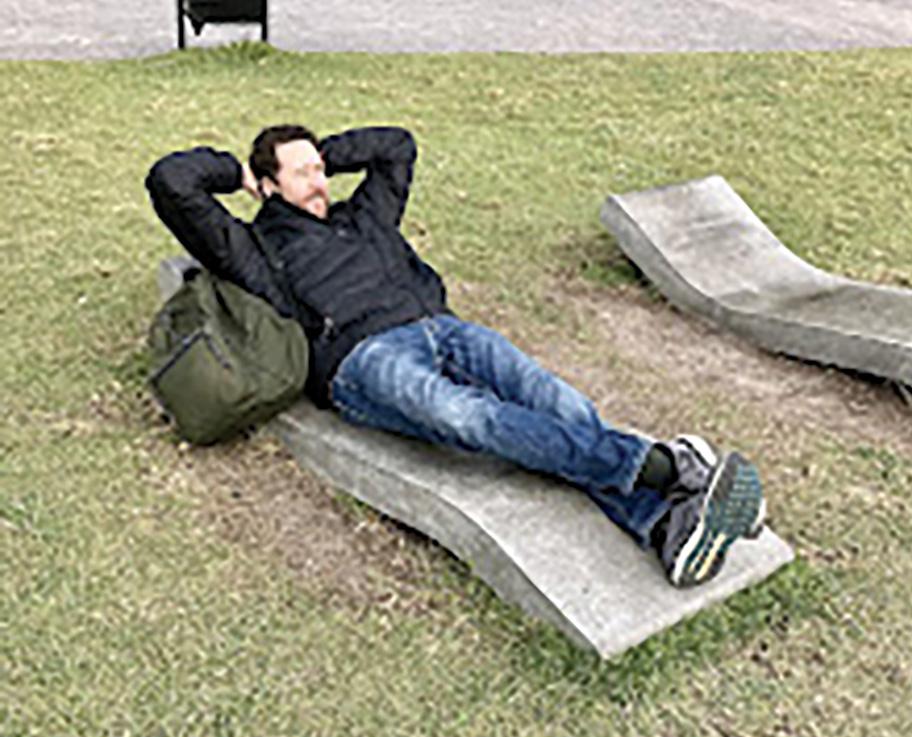
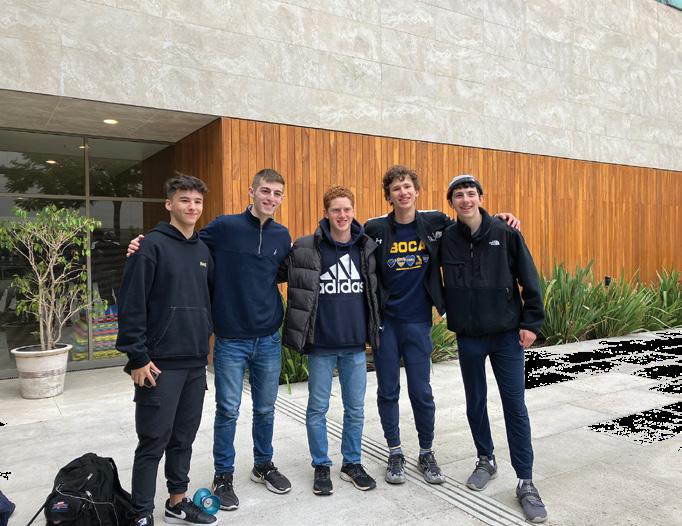
“I didn’t expect that visiting the schools would be so enjoyable, but when we visited both schools, talking with the kids was really cool and seeing how their lives were totally different from ours, even though they are ” Klein said.
In addition to visiting Jewish day schools, students experienced Shabbat on their last full day in Argentina.
“We had organized two service options within walking distance for Shabbat: one was the Beit Jabad Recoleta [Chabad], and the other was Comunidad Bet Hilel, a masor
ti synagogue which was much more like a reform congregation, with lots of music and many youth groups,” Wassner said. “We all had dinner together on Friday night, which was a bit complicated with the prepack aged individual meals, but we tried to make it a little nicer, get a table cloth and make Shabbat together.”
On Saturday afternoon before they departed, students were given free time to roam around the neigh borhood close to the hotel for their last glimpse of the city before head ing out that night. Some of the stu dents went out to an artisans market close to the hotel and others walked to a free Fine Arts Museum nearby.
Senior Matan Goldstein really enjoyed how meaningful the trip was and how he was able to learn about a different culture than his own.

“The trip was a phenomenal display of Argentinian culture and beauty,” Goldstein said. “We learned not simply about the history and cultural references but also had the opportunity to interact with locals and Jewish students our age. I was able to strengthen my Spanish and even more so, create ties with com munities that now seem not that far away.”
thoughts on the trip
Senior Oliver Ferber
It was very empowering to be in a foreign country speaking Spanish. At one point David [Fritz] (‘23), Yuval [Klein] (‘23) and I went to a mall with an hour of free time, and I used my Spanish to talk to the cashier and get a swipe card for the arcade.
History teacher Mark Buckley

Students stops at Cafe La Biela after a walking tour of the Recoleta area of Buenos Aires. The cafe has historically been frequented by many famous authors, politicians and celebrities, and is a popular attraction among tourists.
We went to the tango one of the first few nights we were there, and the ability to really truly be engaged and immersed in the distinctive cultural elements of the place was great.
Obviously when you’re with a group you can’t do everything you want to do... So there were some things like a soccer game that I couldn’t go to. But nonethe less, it was a really fun time, the school planned fun trips and I learned a lot.
The Lion’s Tale Magazine 7
Senior David Fritz
Photo by Nancy Wassner
All photos by Nancy Wassner
Cultivating Jewish Roots
Students should be grateful for their dual curriculum
The start of the school year and the upcoming high holiday season mark a time to reflect on our Jewish identity and values. CESJDS students are lucky to have an exemplary reli gion-based education with varying choices of Judaic classes, holiday celebrations and programming about Jewish identity.

We feel that students often take for granted the privilege that receiving a dual education is. Many students set aside this education and think that Judaic studies class es are irrelevant to their daily lives. However, the Jewish curriculum not only allows students to become proficient in a second language, but it also prepares students for the fu ture by instilling core Jewish values in them from a young age.
One of JDS’s most beneficial programs is the Zman Kodesh pro gram in middle and high school. It offers a variety of options for spiri tual connections ranging from yoga to mechitzah minyan. This allows students to connect with their Jew ish identity however they best see fit. The program encourages stu dents to explore different expres sions of Judaism and foster an indi vidual spiritual connection.
JDS also offers a robust pro gram on Jewish literature and the
By the numbers
of Jewish students have not recieved a formal Jewish education
of children raised Jewish have participated in a youth group or Jewish summer camp
history of the Jewish people. Start ing in elementary school, students gain an understanding of Jewish text through reading Torah and studying ancient commentators like Rashi in their classes. This founda tion of Jewish literature allows stu dents to explore the history of their people and evaluate the connection they have to their ancestors.
Not every student is going to feel a connection through Jewish literature. Still, these classes pro vide a foundation for students to formulate their own opinions and, as they progress in their education, use that foundation to understand their identities.
the extra classes and workload this adds to their schedule. By doing so, they are taking for granted the extensive and unique education we are gaining.
Jews make up only 2.4% of the United States population and ac cording to Pew Research Center, only 1.8% are practicing. Even if many JDS students decide to not practice Judaism after high school, JDS equips them with the prop er knowledge to decide how they want to practice Judaism in a world where Jews are a minority.
of Jewish millennials have visited Israel
Jewish
In addition to Hebrew liter ature and religious history, JDS offers a variety of Israeli history classes aimed to educate students on Israel’s progression of culture. For many students, two of the most meaningful and informative class es are the History of Modern Israel and History of the Arab-Israeli Con flict. These classes educate students on all perspectives of the conflict. Through this education, students have the background to be in formed young adults and are better prepared for potential antisemitism and backlash they may encounter in college.
Students often complain about
In addition to offering classes and programming on Jewish iden tity, the school also has a plethora of holiday celebrations that teach students about the traditions of the Jewish people. From a Purim spiel to lighting the Hanukkah candles, these celebrations allow for an im portant connection with students’ Jewish identities, even if they do not practice these traditions at home.
8 September 2022 — opinion —
51%
38%
Our rich Jewish education al lows for students to explore their own practices and evaluate how they want to continue observing Judaism after high school. As the next gener ation of Jews, what we are learning is essential to helping a minority re ligion such as Judaism live on. 26%
Data compiled from the Detroit Jewish News, Pew Research and The Cohen Center for Modern
Studies
-The Lion’s Tale
Illustration by Nathan Szubin
Procrastination nation
Productivity tips for the new school year
Jonah Beinart OpinionEditor
The end of the weekend is supposed to be a time to rest and recharge for the week ahead. For me, it is a mad rush to finish all the assignments I neglect ed for the last 48 hours. That famil iar feeling of all my muscles tensing when I realized how much work I need to do is crushing.
I know I’m not the only one who procrastinates with school work; many of my peers joke about how they only study for tests on the day of or have a large number of missing assignments that they finish at the last minute before the semes ter ends.
After experiencing a full year of in-person high school following a year on Zoom, I’ve come to realize that virtual school is a key cause of this habit. Online school resulted in a lack of motivation for me because there was a reduced workload. Ad ditionally, lax late work policies removed some of the incentive to complete work on time.
After most COVID-19 restric tions were lifted and school went back to normal, I still procrastinated like the year before.
It is difficult to reverse any
Top Tips
habit, and it is especially difficult to stop procrastinating. However, there are things that you can do to help you manage your time better.
In middle school, one of my teachers gave me a great tip. He told us that after we were assigned a large project, we must start right away. Even five minutes of work, he said, would stimulate our brains enough to help us move forward and conquer the project.
Educational Support Services Chair Susan Zuckerman also advis es her students to utilize a similar routine.
“I tell them to think, ‘You know what? I don’t have to do all of the assignment right now, I just have to get started,’” Zuckerman said. “‘So how about if I take that first little piece, and that might mean typing my name and the title of the assign ment, and now I know I’m in the mode to focus.’”
I’ve found that doing this helps me estimate how long a certain task will take, which teaches me how to budget my time. Even skimming through the content of the work gives me a better sense as to how much time I should spend on that assignment.


Keeping assignments organized is easier said than done. I find that having a list of things to do each night gives me a sense of accom plishment when I can cross tasks off my list, which keeps me motivated.
Zuckerman also likes to keep
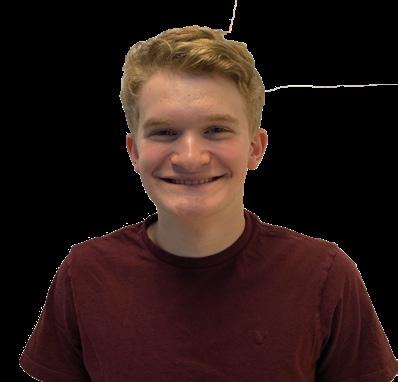
a paper planner with her wherever she goes.
“It tells me everything I need to tell me what to do, and it makes me feel so good to check something off ... for students too, checking items off the list gives you that hit of do pamine when you actually finish an assignment,” Zuckerman said.
Having a list helps, but being able to consistently make that list every day is much harder.
According to the Harvard Busi ness review, people who procras tinate tend to lack good working habits. Without these good habits, people instead choose to do activ ities that make them happy, rather than the work that is required.
“Strong habits reduce our need for self control,” Harvard Business Review said. “They make it easier to stick to effortful behaviors and resist distractions. But the process of es tablishing a habit that confers such benefits usually takes a few months.”
Whatever those habits may be, whether it’s making a list or remov ing distracting electronic devices from the workspace, will only make an impact if you stick to them for a long time.
There will always be circum stances that prevent students from completing every single assignment on time, but using strategies that stimulate our brains can help re duce procrastination and late work.
The Lion’s Tale Magazine 9
not
12% 40% 48% Distracted by more desireable activities Overwhelmed and don’t know how to start Don’t want to complete their school work Why students procrastinate 1. Keep a planner Crossing things off your to-do list is satisfying. 2. Break it up Even doing five minutes of work is helpful. 3. Start fresh Online learning led to some bad habits. This is the year to establish good ones
to
procrastinate
Toxic Television
Reyut Wasserstein Reporter
Growing up, many kids were told that if a boy was mean to us, it meant he liked us.
You wouldn’t tell an adult that if their partner was abusing them physically, it meant that they loved them, so why do we tell little girls that boys just want them to notice them? Why do we say that is an excuse for hair pulling or being chased around the playground?
A lot of the normalization or even expectation of toxicity in youth and teenage relationships can be attributed to the TV industry. TV shows that feature grooming, stalking, controlling behavior and possessiveness in an idealized way incite the viewer to find this behavior romantic.
Neurologists say that our brains don’t fully form until the age of 25, so children and teens are by far the most impressionable group of people in the world. This makes the normalization of toxic relationships in the media even more dangerous.
Two TV shows that spotlight toxic relationships are “Pretty Little Liars” and “You.” Each TV show has its own form of
manipulation.“Pretty Little Liars” is pretty textbook abuse when it comes to the show’s most popular relationship, Ezra Fitz and Aria Montgomery.
The pair meet at a bar when Aria is 16 years old and Ezra is 22, and only find out about each other’s identities when Aria comes into her English class and finds out that the man that she kissed is, in fact, her new teacher.
Seeing who the other is, they decide to break it off. Great. Aria even tries to switch classes so she can have a different teacher because it would be too uncomfortable for her and Ezra to interact on a daily basis. About twenty minutes later, however, Aria shows up at Ezra’s apartment and they get back together.
In my eyes, Ezra groomed Aria. By definition, grooming is when someone builds trust, an emotional connection, and a relationship with someone so they can manipulate, exploit and abuse them. This is exactly what Ezra does to this 16year-old girl. Ezra manipulates Aria into having a romantic and sexual relationship knowing that she is 16 and his student.
Ezra mentally abuses Aria for
the entirety of the show. Every time Aria decides that she is not comfortable having a romantic and sexual relationship with her teacher, Ezra shows up and does something for her, convincing her that they are meant to be.
The couple goes through the abuse cycle on a regular basis.

The calm phase when things are looking up for them, and then the tension building when she finds out something new about his past or him in general.
To top it off, the show portrays anyone who opposed their relationship as the villains. When Aria’s parents find out about their relationship, they are immediately horrified and disgusted. Yet, the show paints it as them being unsupportive as parents.
The most upsetting part for me wasn’t within the show but rather the fan reaction. Fans who didn’t support the relationship were written off as haters, which demonstrates how effectively the idealization of this toxic relationship infects the mind of the viewer.
Not only is the abuse romanticized, but the idea of having feelings that go against an inappropriate relationship is portrayed as intolerable. Opposers of the relationships were actually in the right, so that viewpoint should be promoted, not vilified. This portrayal will not only convince viewers that Ezra and Arias’ relationship is OK, but that if a friend or parent finds their loved one in an abusive relationship, it would be too annoying or hateful to intervene.
10 September 2022
Media created for teens displays a tolerance toward abusive relationships
“Fans who didn’t support the relationship were written off as haters.”
“Cycle of abuse”
Safe Services/Reyut Wasserstein
The show “You” takes a differ ent approach to abuse, outlining a more blatantly violent path. The National Coalition Against Domes tic Violence says that 19.1 million women and 6.4 million men in the United States have been stalked.

Meet Joe Goldberg, expert stalker.
Joe Goldberg watches his crushes and follows them around, then dates them until his instinct is to kill them. It does not take much to see that the relationship between Joe Goldberg and Love Quinn is physically and mentally abusive.
The two kill for each other and harm each other. Yet, the show is so effective at glorifying the relation ship that I rooted for them to work out in the end.

The show continues with two seasons of Love being Joe’s love interest and continues in the cycle of abuse, starting with tensions rising and ending with a blissful honeymoon phase until the next cycle starts again.
These TV shows romanticize the abuse that couples go through. Abuse is scary to hear about, but to watch it unfold in front of you? It’s intense. So why was I hooked onto Ezra and Aria being together? How could I support that relationship, knowing that she was a student and he was her teacher? I knew I wasn’t alone in my confusion.
TV shows can make relation ships that are not healthy seem healthy. Writing, direction and production decisions can manip ulate the opinion of the viewer by tailoring language, lighting, music and costumes to evoke a certain feeling. But just because a TV show
says that it is OK does not make it OK.
As viewers, it’s imperative that we try to consume the good side of media, the positive relationships. We have the choice to watch and to not watch these TV shows, we just have to exercise that choice.
Adults in the industry are the ones who are writing, producing and acting in this type of media. While as viewers we have to make good choices, it’s also on the adults in the media.
The #MeToo movement has raised awareness about domestic and sexual abuse and endeavors to undo some of the damage the TV industry has done on the teenage psyche. Luckily, there are alter native shows that have the same thrills as these shows, without the abuse or manipulation. For exam ple: if you enjoyed thrillers like “Pretty Little Liars,” you may enjoy “Only Murders in the Building.” Or if you enjoy more teenage shows of love, try “Dash and Lily,” “Dickin son,” “When Calls the Heart,” “This is Us,” “Modern Family,” “Brooklyn Nine-Nine,” “How I Met Your Moth er” or even “Teen Wolf.”
The elements that make “Pretty Little Liars” and “You” exciting are the complexities of the characters and the drama they create. You can find the same moral ambiguity and excitement in other shows that do not manipulate your sense of toxici ty in relationships.
Looking for healthy relation ships being portrayed can be per ceived as boring. It is not just up to Hollywood to make these changes, it’s up to us as an audience to make healthier choices.
Boring is better than abuse.
Wo MEN
Abuse statistics
1 in 11 1 in 4
High school students reported having experienced physical dating violence in the last year.
1 in 8 1 in 26
High school students reported having experienced sexual dating violence in the last year. 26% 15%

Victims of contact sexual violence, physical violence and/or stalking by an intimate partner in their lifetime first experienced these orw other forms of violence by that partner before age 18.

The Lion’s Tale Magazine 11
TheHotline.org
Source: Center for Disease Control
Joe Goldberg and Love Quinns’ toxic relationship is one of many in teen television.
Photo by Beth Dubbler, Netflix
Zman
Chofesh?
Sasha Karasick, Matthew Steindeck er, Cati Werbin-Gradel, Reporters
Ever since CESJDS was founded in 1965, a specific time for prayer has always been set aside as part of each student’s day. Over the course of many years, this time in the morning has evolved into what is now known as Zman Kodesh, or ZK. Zman Kodesh allows students to have a part of their day where they can experience a spiritual Jewish connection and have time to relax, pray and reflect.
“Traditionally, Jews have started their day with tefilah in the morning, and so as an educational matter we wanted our students, even if they themselves don’t daven every morning on their own … to
gain skills and understanding of how traditionally Jews started the day with Shacharit,” Head of School Rabbi Mitchel Malkus said.
Before Zman Kodesh existed, students participated in what was previously called Minyan. Minyan was very similar to Zman Kodesh in practice; however, it offered fewer options and was more strictly meant for prayer.
In 2002, the Minyan format was changed into the nowfamiliar Zman Kodesh, according to Dean of Students Roslyn Landy. This change was made in order to recognize that Minyan did not have to only be a time for traditional prayer, but rather a time for all students to connect to

Judaism in a way that works.
Over the years, the program has continued to evolve. New Zmanei Kodesh have been added almost yearly to the program in order to give students a variety of options when picking their Zman Kodesh. Newly appointed high school Jewish Life Chair, high school math teacher and middle school softball coach Robbie Shorr is now in charge of managing the different Zman Kodeshes, and making sure the Zman Kodesh program runs smoothly.
How does Zman Kodesh work? What are the options?
From Shacharit services to yoga, there is a Zman Kodesh option for each student’s personal needs.
12 September 2022
Staff aim to make daily prayer Fast Facts 12 ZK options to choose from 14 high school Ozrim 2 ZKs that use a Mechitzah — In-Depth —
Kodesh or Zman
relevant to today’s teens
Students who enjoy traditional services can participate in Mehitzah Ashkenazi, Partnership Minyan and Mehitzah Sephardi and Masorti, an egalitarian style service.
Partnership Minyan, which is a traditional service that separates males from females but still allows females to participate in reading Torah. Along with the traditional praying options, JDS offers Art and Wellness, Art and Exploration, Journaling, Book Club, and Yoga.
Since 2019, former high school learning specialist Brett Kugler coordinated the Zman Kodesh program in the absence of a Director of Jewish Life. In addition to running the program, Kugler also ran the middle school Mechitzah Ashkenazi minyan for the last 12 years. Kugler’s goal was to ensure that every student has a place in a ZK, so they could connect to Judaisim in a way they enjoy.
“So Zman Kodesh literally means holy time, and that looks different for all different types of people,” Kugler said. “We want to make sure that we are able to provide different avenues to connect and to feel spiritually charged.”
In order to ensure that every student feels accepted, Kugler tried to listen to what students wanted when evaluating which ZKs should be added or dropped. However, the most important aspect of the process to Kugler was ensuring that there was spiritual value in each program.
“There are so many features and facets that go into having success,” Kugler said. “One of the things that’s so beautiful about the school is that we have dynamic educators who can look at the pulse of a Zman Kodesh space, and who can then adjust accordingly to make sure that it really is successful.”
Kugler thinks the staff members that continue to lead their Zmanei Kodesh each year allow for new opportunities because the program is so stable.
“So this year, we really built out and we did the Partnership Minyan, which is brand new this year; that has seen a lot of success,” Kugler said. “We did the Book Club, which is new. We’ve been revamping the Art and Explorations Zman Kodesh to include a lot more Jewish content. It’s been nice to have both a combination of consistency and growth at the same time.”
Partnership Minyan has quickly become popular, led by Shorr. As Shorr takes on his new role, he hopes that the attitude as a whole towards Zman Kodesh changes and becomes more positive.
“I don’t want us to be saying ‘make sure you’re on time to class and ZK,” Shorr said. “ZK is a class. If you say make sure you are on time to class, that should include ZK.”
While Shorr headed his own Derekh Tefillah for about four years, he only started the Partnership Minyan this past year. Shorr describes it as the middle point between Mechitzah and Egalitarian minyan, where there is davening every day and women can participate in almost everything except for leading Shacharit
Shorr said one of his biggest challenges as a Zman Kodesh leader is recruiting, especially since Partnership is the newest ZK to the long list of options. Partnership lost a lot of strong members from the Class of 2022, which is why Shorr is trying to recruit more students in order to regain the momentum. Along with new members, Shorr’s main focus is making sure things go smoothly and that students are participating day in and day out.
“So I definitely try to encourage participation,” Shorr said. “I also know everyone’s coming from different families, different Jewish knowledge, backgrounds and comfort.”
Why do people enjoy Zman Kodesh and find it meaningful?
Many students feel that Zman Kodesh is a great way to relax and get ready for the day while being able to have a meaningful experience.
“It’s good in the morning to have time [dedicated]to wake myself up because obviously when I first get to school, I’m kind of tired,” junior Elliot Rogal, a member of Mechitzah Ashkenazi said. “Then I have at least a little bit of time to get prepared for the actual rest of the day.”
Do you enjoy Zman Kodesh?
Do you pray regularly?
The Lion’s Tale Magazine 13
Should Zman Kodesh be mandatory?
*Survey of 70 high school students
YES NO 77.1% 22.9% 41.4% 32.9% 25.7% YES NO DON’T CARE YES NO 34.3% 60% 5.7% SOMEWHAT REFLECTIONS ON ZK
Zman Kodesh provides students with a way to smoothly transition into the school day instead of going straight into rigorous classes immediately after waking up. The various options give students the freedom to choose which activity they want to participate in to start their day.
Sophomore Samantha Shapiro was Book Club Zman Kodesh last year, and finds it “a really nice addition to the school day.”

“I wanted to do something in the mornings that would feel like a good use of my time, and I really enjoy reading and I get to be with my friends,” Shapiro said. “I think it’s a great opportunity to bond with people, that may not be in your grade, and also to experience new things that help you connect to your Judaism.”
The different Zman Kodesh options have also allowed students to be able to pray in the style of their denomination and background, making it easier for them to connect with their Jewish roots.
Sophomore Netanel Bitton joined Sephardi Mechitza Minyan because his older brothers enjoyed the Mechitzah Sephardic Minyan and it is led by one of his favorite teachers, Nick Miller. This Minyan allows Bitton and others to pray in the unique ways of his Sephardic ancestors.
“I always grew up somewhat Sephardi, but I go to a Chabad, so this is a kind of only chance I have to do Sephardi prayer,” Bitton said
As a Jewish school, having Zman Kodesh in the mornings reinforces the focus on Jewish learning at JDS. Parents who are worried about their children not receiving an adequate Jewish education will feel reassured knowing students have time to explore their Jewish identities.
Additionally, many parents get involved in their child’s ZK, with some coming in to hear or
read Megillah on Purim and others coming in to pray for their child’s bar or bat mitzvah.
In the Sephardic ZK, parents even went so far as to help build the supplies used by the minyan.
“All the furniture in our ZK, the shulchan, the aron, the mechitzot, the brown cabinet, the tallit racks, all of that was made by students and their dads,” Miller said. “The day they brought in the furniture was, for me, luminous.”
Students have also been able to take initiative in their ZK and work on projects that reflect their time spent in ZK. Art and Exploration ZK, led by art and design teacher Benjamin Tellie, created a Guide to Jewish Life and Values magazine that showcases and informs readers about different Jewish practices and holidays in forms of artwork including facts and explanations on the side.
“Mr. Kugler and I thought it would be really cool to have them [the ZK students] create a ‘zine’ or a magazine that kind of showcases all the projects that we’re working on, and could also be a guide for Jewish life and value for families and friends,” Tellie said.
What are problems with ZK
While ZK can be a space for students to connect with their Judaism and get themselves ready for the day ahead, many students struggle to find meaning in Zman Kodesh. A large number of students believe that ZK should be optional so that only people who want an opportunity to pray can have the time to do so, so that school can start later.
Junior Itai Topolosky, who was formerly in Mehitza Ashkenazi ZK and is now in Partnership Minyan, has mixed feelings about the ZK program and whether ZK should be required for all students to have to participate.
“I think we should make it
“Really think about what [ZK] means literallya sacred time, and to think about that as a time that’s separate from what you do at other times. It’s not just a thing we do, it’s set aside for a reason: to help you be more balanced all together.”
- High School Jewish Life Chair and teacher Robbie Shorr

[ZK] optional, just because so many people are commuting from far places and we also start so early … it’s hard to get here on time and a lot of people don’t even connect to praying and don’t like it,” Topolosky said.
At the start of second semester, a new tardiness policy with the reflection room as a punishment was added due to the high amount of unexcused student absences and tardies, especially during ZK. This is because many students would come to school late and skip Zman Kodesh.
The reflection room is a space where students who are late or absent to school go to reflect and understand the importance of punctuality and following the school’s values. The reflection room also applies to those who do not follow the school policies and behave in a disruptive manner during class time.
On a regular school day last spring, 27 students in the school were reported to be tardy unexcused to school, whether they came to school after 8 a.m., were in school before 8 a.m. but were late to Zman Kodesh, or came in after or halfway through Zman Kodesh according to Landy.
Students were upset about this policy and feel as though being late to school or Zman Kodesh should not lead to such a harsh punishment, especially considering the tardiness may not be their fault.
“... A lot of people get marked late because of ZK and because we start so early… it is unfair to people, and now that we have the reflection room, people are getting detention,” Topolopsky said.
The Lion’s Tale surveyed 70 students about the newly added tardiness policy, and why they felt it was unnecessary.
“The unnecessarily punitive enforcement of late-to school policies that result in detentions [or] punishments that are a part of ZK
really like when we have parsha prompts because they prompt deep thinking. They prompt deep thinking and really inspire greatness.”
“I
What is especially meaningful in your ZK?
“Every Wednesday we have quaker minyan, where we have 10 people stand up and just speak their mind. We sometimes have discussions about... school [and] personal stuff.”
14 September 2022
Junior Abby Greenburg
Sophomore Adi Weissman
are unreasonable to me,” wrote one anonymous respondent. “There is functionally no difference between coming to your ZK at 8:01 and 8:00, but the fact that you can get marked as ‘late to school’ for that is total nonsense.”
In addition, attendance takers and hall duties were assigned in order to prevent students from skipping Zman Kodesh and keeping track of these unexcused tardies. English teacher Melissa Fisanich was assigned to take attendance for Masorti Minyan and Ashkenazi Mechizta Zman Kodesh at the beginning of this year.
“I’ve had a couple times where kids have come in and checked in with me … and then didn’t go into the Beit Midrash and then just went out [to] socialize with their friends,” Fisanich said.
Many Zmanei Kodesh have also been experiencing trouble with student engagement, instead of using it as a time to socialize.
“We’ve had normal challenges keeping kids interested and making everybody happy,” Mechiztah Ashkenazi leader and Talmud teacher Rabbi Reuvane Slater said. “Originally I think it was a selfmotivated group because they all came from traditional backgrounds and they wanted to [pray], and then over the years it sort of evolved into many [students] sometimes just coming with friends.”
Some students wonder why the program is mandatory if they are not technically “required” to pray. But students and faculty are only two parts of the JDS community; parents represent a third part with equally important preferences.
“Sometimes there’s a disconnect between what families want for their kids and what students themselves want, particularly at the high school level,” Malkus said.

Some students feel as though their parents have a lot of influence
on what Zman Kodesh they pick, taking away the aspect of freedom and choice when it comes to having multiple options for Zman Kodesh. Meanwhile, students who want to pray find that they are disrupted by those who do not want to be there.
“I would like to see more people participate,” another anonymous respondent wrote. “In a praying minyan like Masorti, many students are forced to attend by their parents. Thus, many take the time to chat with friends—disrupting the minyan—instead of contributing to the spiritual environment or even

sitting quietly.”
Although the topic of Zman Kodesh might generate polarizing opinions, it is a time that was created specifically to accommodate everyones’ beliefs and practices.
“We’ve done different things along the way, and so we wanted to recognize in our pluralistic school, it’s not only about traditional davening options, but about alternative Jewish spirituality,” Malkus said
“The partnership minyan started this year, so in the beginning it was really nice forming a new community.”
“I
The Lion’s Tale Magazine 15
Which ZK should YOU be in?
want to pray with a Mechitzah? Masorti Minyan OR Partnership
START YES
create art? Art & Wellness OR Ceramics OR Art & Exploration Do you
write or read? Journaling OR Creative Writing OR Book Club Do you want to be active in the morning? Try these other options: - Being an ozer - Derekh Tfillah - Havurah
Do you enjoy praying in a service everyday?
Do you
Mechitzah Ashkenazi START
Do you want to
want to
pray
an Ashkenazi style service?
Mechitzah Sephardi Do you want to
in
like how we incorperate our projects with meaningful holidays and prayers.”
NO YES NO YES NO YES NO YES
YES NO
NO
Yoga & Mindfulness
Junior Gili Schisterman
Senior Josef Kay
Traveling teachers
Educators spend their summer in a variety of places
Lily Rulnick AssistantManagingCopyEditor
For a lot of students, it’s hard to imagine teachers hav ing lives outside of school. But during the summer, teachers, administrators and other faculty members change their routines and claim new titles for the two and a half month break.
Whether changing up dai ly practices means checking their email less frequently, eating lunch at home or even waking up an hour later, teachers’ lives look very differ ent during the summer than during the school year.
High school biology teacher Melissa Andrew changed up her daily routine during the summer by allowing herself to sleep later than her usual wake up time.
“That was the biggest differ ence because I got up at five a.m. [during the school year], and I got up probably closer to seven or eight [in the summer],” Andrew said.
Andrew said she appreciates this opportunity to rest during the summer because she “feel[s] like teachers usually work outside of their contracted hours for the year,” so the break allows teachers and other faculty members to “recharge and rest.”
But sleeping in isn’t all that Andrew had on her agenda. In ad dition to teaching biology, Andrew will co-teach the newly introduced Ecology and Climate Science course. She spent a good amount of her summer creating a curriculum for the course as well as enhancing
the biology curriculum.
Middle school Jewish text and Hebrew teacher Aviva Gershman also had her hands full this summer. She ran the Hebrew Immersion program at the Ramah Day Camp in Germantown called “Sha’ar.”
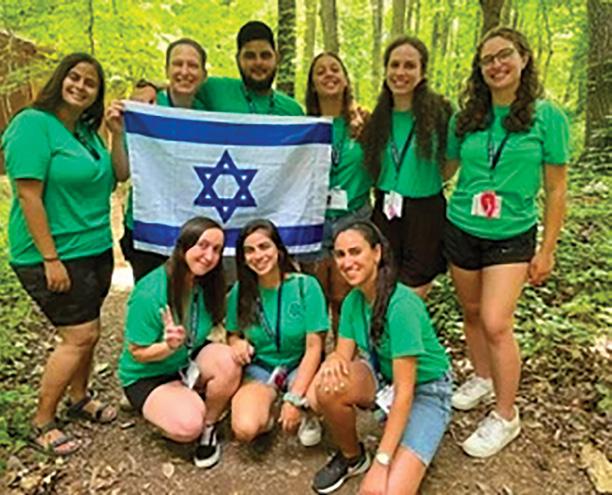
“I feel like it’s really perfect for me,” Gershman says. “It’s total ly in my wheelhouse because I love teaching Hebrew and I love speak ing Hebrew. And [I] want to focus on connecting American Jews with Israeli Jews … And I want to really bridge, you know, what is kind of a growing divide, and I want to [erase] that divide. So Hebrew is really, for me, the best way to do that.”
Gershman said that many members from the Jewish Text de partment, including middle school Toshba teachers Rachel Meytin and Marc Silberstein continued to work alongside Gershman during the summer at the Ramah Day Camp.
Aside from revising various projects and scouting biblical texts that could be incorporated to her curriculum, Gershman didn’t plan on gearing up for the new school year until Staff Week arrived in mid-to-late August.
Dean of Experiential Leader ship and Service Learning Tori Ball has a similar system, as she often doesn’t return home until the week before the school year starts.
“I am a person who transitions very quickly,” Ball says. “... I’m often sad at the start of the school year, not about starting school but feel ing kind of stuck at home, if that makes sense. Feeling like I can’t ad
Fast Facts 39.8
Hours the average American teacher works per week during the school year 82
Percent of Americans traveled last summer 39.8
Hours the average American teacher works per week during the school year
21.5
Number of hours the average American teacher works per week during the summer
by Pew research
venture as much … I often like to at the end of summer go to Ocean City or Rehoboth, even for just a day or something, because I feel like that makes me very excited to be back in Maryland.”
To get as much adventure as she can get out of the summer, Ball “completely detach[es] from [her] normal life,” and she emphasizes the importance of the shift to “pri oritizing adventure over productiv ity.” During the previous summer, Ball chose to detach herself by liv ing outdoors on the John Muir Trail in California for three weeks.
“So a fun fact about me is that I never plan my summer in advance,” Ball says. “But I will certainly be driving cross country and I will go on some sort of wilderness adven ture along the way. I never plan in advance. I always go on an adven ture.”


Ball ended up choosing to trav el to the Tahoe Rim Trail, which is a 175-mile circuit through the moun tains surrounding Lake Tahoe. Sim ilar to last summer’s adventure, Ball carried all of her items in a back pack and camped out as she pro gressed through the trail.
While Ball, Gershman and An drew all mentioned how much they love teaching, each one of them rec ognizes that having a summer break is a crucial component to having a successful school year.
“I think some people are un comfortable having a lot of free time,” Ball said. So I feel very strongly about the importance of summer and enjoying every last drop of summer.”
— features —
Dean of and Service Learning and math teacher Tori Ball hiked the Tahoe Rim Trail in California during the summer.
Hebrew and Jewish Text teacher Aviva Gershman spends her summer work ing at Camp Ramah in Germantown.
Photo by Aviva Gershman
Photo by Tori Ball
Science teacher Melissa Andrew gets ice cream with her family at Bethany Beach.
Photo by Melissa Andrew
16 September 2022
Data
Matan Silverberg Arts and Entertainment Editor
Reporter
While walking through Jan ice Beinart’s kitchen, the aroma of freshly baked cookies fill the room. Half a year ago, Beinart, parent to alumna Mira Beinart (‘22) and ju nior Jonah Beinart, launched a cookie business out of her home called JLB (Janice Lynn Beinart) cookies.
Beinart, who works as a speech language pathologist for Adventist Healthcare, has always enjoyed bak ing. However, she never planned to create a business herself. When she hosted a celebration dinner a week before senior graduation, Mira re quested cookies for dessert.
“I made the cookies and both Mira and Jonah said, ‘Oh my gosh. You should start a business,’” Bein art said.

A couple weeks later, to cele brate her cardiologist husband Sean Beinart’s birthday, which happened to be on Valentine’s Day, she baked heart shaped cookies topped with electrocardiogram lines for him to bring into his office. His co-workers loved the cookies and started to buy some for themselves. From then on, the business began to take off.
“Then another friend [from Se an’s office] said ‘I have a daughter having an engagement party’ and she wanted five dozen cookies for the party,” Beinart said. “Between JDS graduation and a few people at my husband’s office, I decided to actually start selling the cookies.”
The state of Maryland consid ers her business a cottage food busi ness, which is essentially a business
Beinart Bakery
Parent begins a baking business “JLB Cookies”
run from home. Therefore there are some regulations that she must follow; she can’t sell them outside of the state of Maryland, and each package must have all of its ingre dients listed.
Typically, it takes Beinart about three to four hours to bake a batch of cookies. This process includes making the dough, cutting and baking the cookies. Once the cook ies form, she makes the icing and decorates the cookies. Lastly, after letting the icing dry, she seals and packages the cookies.
A dozen cookies cost $60, which includes customization and packaging too. On average, she bakes around once a week; howev er, there are certain periods when she finds herself baking much more than usual. For example, during graduation and college decision deadlines, she made many doz ens of cookies for her daughter’s friends that were graduating and heading off to college.
Alumna Zoe Fischman (‘22), who will attend Emory University this fall, ordered cookies for her new roommate. Fischman appreci ated the freedom she had in cus tomizing the cookies. She ordered gluten-free sugar cookies and was able to customize the colors, shapes and icons to fit the theme of Emory.


“There was so much care and detail put into these cookies, and they clearly reflected my deci sions, which could not be achieved through mass production; they were one of a kind,” Fischman said.
Soon after her business launched, the war in Ukraine broke
out. Therefore, she began to donate portions of her proceeds to chari ty organizations. Beinart baked a batch of blue and yellow cookies that were advertised on her website (jlbcookies.com) and her Instagram page (@jlbcookies), and all of her proceeds ($540) were donated to an organization called the Hebrew Immigrant Aid Society that assists refugees around the world.
In addition to donating to ref ugees, Beinart also donates her proceeds to organizations that help other disenfranchised groups.
During Pride Month, she sold rainbow cookies and donated 10% of the money she made ($52) to the Trevor Project, an organization that focuses on suicide prevention efforts among LGBTQ youth. She also recently baked cookies with pro-choice designs, and 10% of those proceeds were donated to the organization Planned Parenthood.
Beinart spends countless hours preparing cookies for her custom ers, but she cannot try the cook ies she bakes because she is glu ten-free and vegan. Despite that, she continues to provide for her closest friends and family as well as charitable causes around the world.
“She just makes them just out of pure love,” Beinart. “Like she loves the look on my family’s face when we eat something that she makes and it’s amazing. She does it because she just loves making us happy.”
The Lion’s Tale Magazine 17
“She just makes them just out of pure love,” Beinart. “Like she loves the look on my family’s face when we eat something that she makes and it’s amazing. She does it because she just loves making us happy.”
Alumna Mira Beinart ‘22
Matan Silverberg
Photo by Janice Beinart
Influencers: slap or cap?
Social media creators can both benefit and harm teens
Kaelyn Rashti Reporter
Throughout each decade, a new form of media has been viewed as a corrupting influence on teens. In the ‘50s, adults were concerned about the effect that Elvis Presley and his “provocative’’ dance style had on teens at the time. In the ‘80s, adults lamented the time teens spent watching music videos on MTV. Now, adults are concerned about what social media is doing to teens’ minds.


One of the main parts of social media is the influencers on TikTok, Instagram and YouTube who have thousands of followers and share videos and posts daily. Should adults be wary of influencers’ impact on teens? Or, are influencers really doing better things for society than it may seem?

“[Influencers] can help people create new mindsets to have a better perspective on themselves in life,” sophomore Neely Shemony said. “But in some senses, it can also be very dangerous for some people because they can be influenced to do something that they don’t actually want to do.”
A notorious example of this was the “Tide Pod Challenge” in 2018, a challenge spread primarily through Youtube. The goal of the challenge was to chew on a Tide Pod without swallowing the soap. According to Lindsey Bever for the Washington Post, around 220 teenagers were reported to the U.S. Poison Control Center for being exposed to poisonous substances in the Tide Pods.
Two other examples of similar challenges were the “cinnamon challenge” and the “salt and ice
challenge.” The concept of the cinnamon challenge was to ingest a spoonful of cinnamon in under a minute without reacting. Similarly, the salt challenge consisted of teens placing salt somewhere on their body, typically their arms, applying ice to the same area and holding it there until they experienced a burning sensation similar to frostbite.

This challenge, which was promoted by influencers, would result in burns left on teens’ skin and promotion of dangerous, impulsive behaviors.
Another harm of influencers is that they can make their audience feel insecure about themselves. Since several teens spend their free time scrolling on social media, and many of them may find themselves comparing their looks or personality to an influencer, who typically represents the ideal social media presence.
Whether the influencer is aware of it or not, the content they create may be damaging their audience’s mental health. By showing only the glamorous parts of their lives, they make it seem like they have no struggles or challenges in their lives.
Nicol Maciejewska at The Teen Magazine says that you may not be able to fully trust everything influencers show you. It’s hard to differentiate between the realistic content they show and the content that only shows what they want to show the world.
Although influencers certainly have their downsides,
senior Samantha Eidelman feels that they can bring healthy mindsets to our society. They note that some influencers create content about body positivity and endorse positive messages to teens.
“There’s some people that go out of their way to promote positive habits, or brands, or just general practices,” Eidelman says. “And those are the types of people that I do appreciate and that are considered influencers.”
One similar trend was the body positivity movement, which trended on social media around June 2020. Originally, the movement kicked off in 1969 when people started celebrating their bodies, no matter their shape. When TikTok grew in popularity during quarantine, the movement began to thrive once again. Influencers from all around the world have since been showcasing their different body types in an attempt to normalize variety in bodies.
For example, influencer Remi Bader takes the time to show others how the latest fashion trends look on a plus-size body. Selling inclusive sizing has been an ongoing issue for many years, and Bader has taken it upon herself to raise awareness and make a change to today’s norms. Acting as a voice for those without a platform, she has managed to grab the attention of mainstream brands and worked with them to improve their inclusivity.
Many influencers have also been trying their best to provide a sense of comfort for their audience. For example, a number of influencers have been taking their time each
18 September 2022
Facts from Shopify fu$13.8 billion
“But in some senses, it can also be very dangerous for some people because they can be influenced to do something that they don’t actually want to do,”
48% The influencer marketing industry was worth $13.8 billion in 2021 Gen Z Is most influenced 50,000 Influencers on TikTok 48% Of consumers distrust influencers by influencers
- Sophomore Neely Shemony
night to read a bedtime story live on TikTok. Some even provide live music or an outlet for people to talk about their days. Others do research and provide tips to improve sleep, mental health or ways to make their followers’ days better.
Some influencers take time to prove to their followers that they’re more than just a video on a screen. They allow their followers to connect with them and they work hard to show that they truly want to help and be available to those who are in need.
According to Kevin Dean at ManoByte, there’s a “strong aspect of trust between an influencer and their audience.” It is up to the influencer to form a connection with their followers and earn their trust. For some, this could be a heavyweight to carry throughout their career. This may lead people to wonder what it would be like if there weren’t any influencers to begin with.
Eidelman believes that if influencers disappeared, there would be both positive and negative impacts.
“I think there would be a lot less self-consciousness and self insecurities,” Eidelman said. “Also I think that in some ways people would have trouble getting help with certain things or surrounding themselves with positive content.”
However, it’s not only up to the influencer to ensure a positive mindset for their followers. Teens may have to think about what the right choice is to make when spending their time on social media. This includes deciding which influencers will do more harm or good for their mental health.
“I started watching and listening to influencers that really attended to my needs,” Shemony says. “Things started changing and, you know, it was for the better.”
Timeline of influencers:
Coco Chanel
1921
Coco Chanel took her place in society with her fashion line and made an impact in the influencer world with her new and inspiring designs.

Michael Jordan 1984

The first brand deal was made with Nike and Michael Jordan, creating “Jordans.”
Jennifer Aniston
1997
Jennifer Aniston partnered up with L’Oreal Elvive after making history with her “Rachel Green” haircut.

Kate Moss

2007
Kate Moss cam out with a highly desirable collaboration with Topshop that sold out fast and had high demand.

Instagram
2010
Instagram was launched, introducing a new perspective to social media. This brought a new form of communication to bloggers and provided an audience for influencers to come.
Huda Kattan
2013
Content Creator Huda Kattan released her own makeup line “Huda Beauty” showcasing to other influencers that they can form their own career based on their platform.

TikTok

2016
TikTok was launched, forming society into what we know it as today. Influencers took off with their content and branched out their platforms. TikTok influencers blew up over quarantine especially and are still some of the most successful today.
The Lion’s Tale Magazine 19
Coco Chanel image from Chanel website, Michael Jordan image from yahoo!sports, Jennifer Aniston im age from Biography, Kate Moss image from Coquette, Huda Kattan image from Forbes Instagram image from eDigital, TikTok image from Apple Store.
Summer, sun and sports Athletes
compete in Maccabi Games
Nini Panner Reporter
Jewish teen athletes from around the country gathered in San Diego this summer for the 40th annual JCC Maccabi Games. The 2022 games, held from July 31 to Aug. 5, hosted over 1,500 American athletes from the ages of 12 to 16 years old, offering them a unique opportunity to bond with peers while competing for athletic recognition.
Five CESJDS students traveled to San Diego this year, representing the Bender JCC of Greater Wash ington on the boy’s baseball and basketball teams. Among these stu dents was junior Todd Lazoff, who played on the basketball team and had a great experience competing in San Diego.
“I met a lot of new Jewish kids just from my area and also from all over the country like Chicago and Cleveland,” Lazoff said. “I wanted to do Maccabi because playing basket ball is something I really love to do and it’s basically a big sports tourna ment that I can play with other Jews from my area.”
Besides sports games, Maccabi hosted different events and activi ties for the players including attend
ing professional sports games, beach parties, baking and mini golf. These activities gave the athletes a chance to relax and socialize with partic ipants from around the world. An important aspect of this connection for many athletes was the chance to meet fellow Jewish teens in new communities.
“Maccabi really brought all types of Jewish athletes from across America together and I got to meet athletes with similar interests from totally different areas,” junior Sam Sharp said. “It was really nice for me to see more people like me and it made me feel like I wasn’t alone in being a Jewish athlete.”
Similar to the Olympic Games, the Maccabi games have opening and closing ceremonies. All 56 dele gations from around the world gath ered in a stadium to meet with fel low players and hear speeches from the leaders of the games.
Teams and delegations world wide grew to understand and ap preciate each other’s skills. The under-16 basketball coach and del egation head for the Bender JCC Kindy Diallo noticed this difference on and off the court for his team.
“From Monday to Wednesday there was a difference,” Diallo said.
THE NUMBERS 5
1
“The bond they created, they were always together. They were always hanging out and then they showed on the court as well. They played for one another. We didn’t have a single selfish player. Everybody really just played their role, played smart.”
Outside of the games, athletes were either placed with host fam ilies or, as a new arrangement due to COVID-19, stayed in the dorms of San Diego University. It gave the teens a chance to form lifelong friendships with people of all ages in the Jewish community.

2
“My host family was amazing,” Lazoff said. “They were really kind and … even went to some of the games. They always made sure we had everything we needed and even planned a party for us.”
Whether competing as a team or individually, there was a place for every Jewish teen in the 2022 Maccabi games.
3
“Maccabi obviously focuses on being competitive and trying to win, but it also allows you to learn more about the Jewish faith and allows you to learn more about being in volved, being more mature,” Diallo said. “... [The athletes] have to grow up and learn about themselves … There’s a competitive aspect to it, but it’s also a great comradery and just making friends and learning more about the sport, learning more about yourself and growing.
— sports —
BY
JDS students participated in the Maccabi Games
student won a gold medal with his baseball team
JDS students stayed with a host family in the San Diego Area
JDS students stayed at San Diego University
“I wanted to do Maccabi because playing basket ball is something I really love to do and it’s basi cally a big sports tourna ment that I can play with other Jews from my area.”
Junior Todd Lazoff
20 September 2022
Junior Andrew Lefkowitz hits a ball during a game in the Maccabi tournament. Photo courtesy of Paula Lefkowitz
pickleball phenomenon
Tennis-like sport gains popularity
Zara Ducker In-deptheditor
Pickleball, a combination of tennis, ping-pong and badminton, is known for being a fun and easy sport to learn. While it is mostly thought to be popular among old er generations, pickleball is a social sport that can be enjoyed by people of all ages and levels.
Pickleball has become one of the most popular sports in the Unit ed States. According to the Sports & Fitness Industry Association’s (US APA) report, pickleball is the fastest growing team sport in America with a 21.3% increase in pickleball partic ipants from 2019 to 2020.

“I think pickleball is a great group activity,” Athletic Director Becky Silberman said. “I know that there are the pickleball courts on Montrose and I always see like 50 people that are 60 and above waiting in line to play.”
Jonathan Gordon, parent of alumni Zachary (‘19) and Eli (‘22) and sophomore Gigi Gordon, enjoys playing pickleball every Wednesday with his friends. He enjoys the op portunity to take a break from his busy schedule to see his friends while still being able to workout.
“I love playing pickleball because it’s great excercise and is a reason to be with my friends,” Gordon said. “I enjoy the lots of time we get to share with each other while playing.”
Similar to tennis, pickleball re ceived a lot of attention during the pandemic. People wanted to play a sport that was outside and permit ted social distancing.
“My grandpa and I started playing pickleball together during the pandemic because we could be socially distanced from each other, although I was actually really sur prised by how much I liked playing,” freshman Leo Steindecker said.
The sport is played on a small court and depending on the intensity of the game does not require that much physical
activity or running, which makes it easier and less dangerous for the older generations and people with injuries to play. This holds true for Steindecker, who was rehabbing an injury over the summer.
“I played a lot of pickleball this past summer at camp because I dislocated my knee and couldn’t participate in all the intense sports that my friends were playing,” Stein decker said. “Pickleball was a good sport to play because it still felt like a good workout and was fun to play although I wasn’t at risk of reinjur ing myself.”

Pickleball can typically be played on tennis courts and does not require a lot of space or equipment.
“It’s super accessible, you don’t need to have an official court and you can kind of set up a net any where,” Silberman said. “I think it’s so popular because it caters to all ages. It’s a really good workout but on a small court, so little kids can figure it out but also people in the aging population, even if they had life-long lingering injuries, could still play pickleball.”

Despite its growing popularity, Silberman does not believe that CESJDS will have an official pickelball team.
“I don’t see it necessarily be coming an interscholastic sport,” Silberman said. “Although, we have a new P.E. teacher who is also our tennis coach and he is definitely going to want to bring in pickleball. I think it’s something that is easy and that students would enjoy, so I would definitely like to implement it in our P.E. curriculum.”
How-To Play
1 Inbounds
If the ball is hit out of bounds you lose your serve and have to give the ball to the other team.
One bounce
This rule sets pickleball apart from the other net sports. When you serve or return the ball to the other side, it must bounce one time on your side.

3 Serving
When serving the ball, one foot has to be behind the baseline. Whoever starts the game is typically determined with a coin flip.
4 No-volley zone
Once served, the ball cannot land in the lined box that surrounds the net. This space is called the no-volley zone and is seven feet away from the net. However, after the serve, the ball can be hit in there.
End of game
Traditionally, the game ends at 11 points, but you can set your own mark. However, the winning team must win by at least two points. When the first team hits six points, the teams switch sides of the court.
The Lion’s Tale Magazine 21
2
5
Information from Pickleball University
Martin Schneiderman, grandparent of freshman Vivi Ducker and senior Zara ducker, plays pickleball with his friends. Photo taken by Zara Ducker.
Fall sports
Sneak peak
Head coaches and students preview the upcoming season
Compiled by Aaron Waldman, SportsEditor
Photos courtesy of: Cindy Zhang, Maximo Narvaez, Abby Kirsch, Olivia Simonetti, Michelle Belinke, Alec Silberg, Lilah Waldman, Jonah Mellen, Sela Wertleib, Jakob Lipsky, Jordyn White and Micah Goldrich


Girls Varsity Volleyball
Head Coach Cindy Zhang
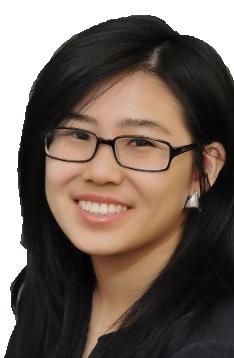
Girls varsity volleyball head coach Cindy Zhang began building the foundation for the girls volleyball team last season. The team’s goal this season is to have a winning record and hopefully make it far into the playoffs. Zhang hopes to place a big emphasis on passing with good fundamentals and running an offense in order to reach that goal. “I’m really excited to build on what they learned last year. We have a lot of returners and then we also have a lot of really good new talent,” Zhang said. “... It’s gonna be a very exciting year for volleyball.”
Fun Fact: Zhang used to play the libero position, which is a back row defensive specialist.
Boys Varsity Soccer

 Head Coach Kevin Gnatiko
Head Coach Kevin Gnatiko
Kevin Gnatiko will step into the head coaching position for boys varsity soccer this year. He hopes to win a championship and improve every player’s technical and athletic skills by the end of the season. Gnatiko takes hard work seriously and he wants the team to be the best versions of themselves. “It’s about that culture where everyone is going to come out and give a hundred percent,” Gnatiko said. “They play for each other.”
Fun Fact: Gnatiko started coaching soccer in 2009.
22 September 2022
What do you think the girls varsity soccer record will be? Whoever predicts the correct record will recieve a ten dollar Starbucks giftcard courtesy of the Lion’s Tale Voices from the Lion’s Den
9-1 Junior Alec Silberg 6-4 Freshman Lilah Waldman 7-3 Sophomore Georgia Lindenauer
Girls Varsity Soccer
Head Coach Paul Simonetti

After the girls varsity soccer team finished in first place during the regular season but falling short in the playoffs last year, girls varsity soccer head coach Paul Simonetti wants to win it all this season. Because the team lost only one senior last season, much of the team is equipped with the necessary experience to hopefully succeed again. Simonetti said that the area needing the most improvement is skill development, since they already have a great team environment. “The attitude of our players is just fantastic,” Simonetti said. “They’re great team players. They’re great teammates. They support one another.”

Fun Fact: Simonetti is the father of Assistant Director of Athletics Tori Simonetti.
Girls Varsity Tennis
Head Coach Alex Kirsch
Eager to rebuild the girls tennis program, first year coach Alex Kirsch is ready to get started. His recipe for of success is when there is skill improvement, excited players and a positive atmosphere. Kirsch is especially ready to express his style of play to the players and foster good relationships with them.
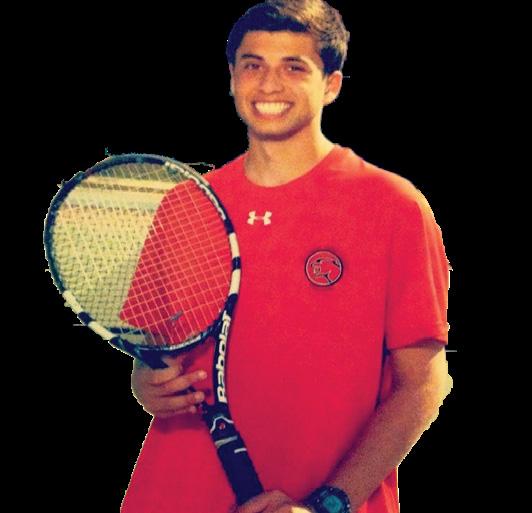

“We want to create a lot of trust, which for me is going to be a big thing,” Kirsch said.

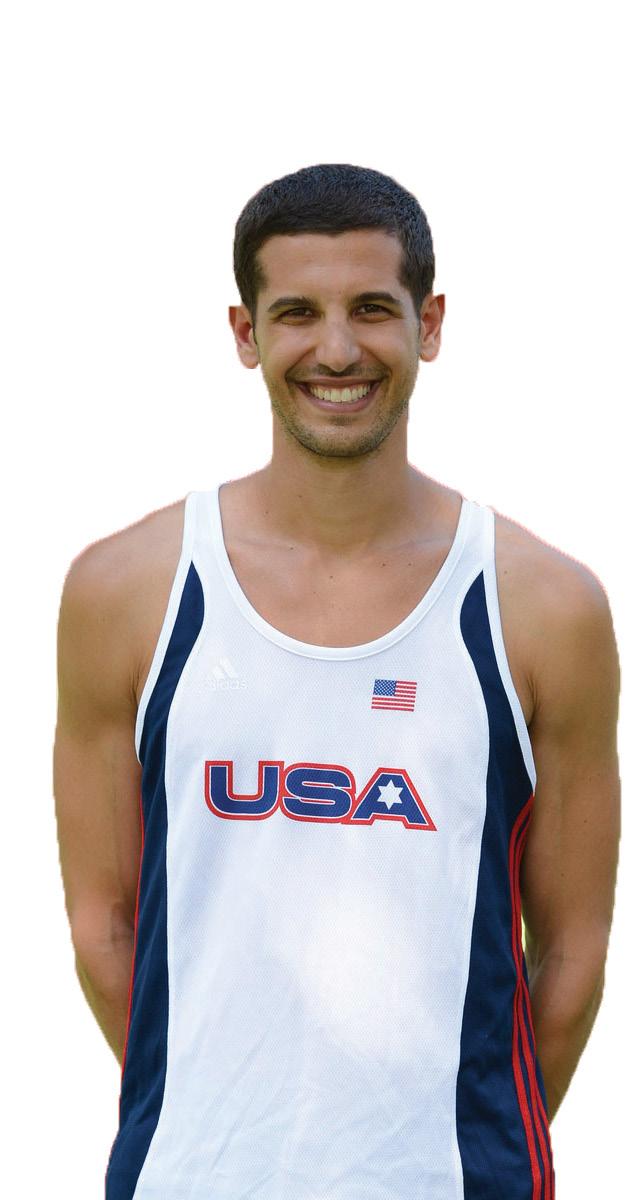
Fun Fact:
Kirsch was a four-year varsity tennis starter at Quince Orchard High School.
Cross Country
Head Coach Jason Belinke
Cross country head coach Jason Belinke has high expectations for the fall 2022 season. Both the girls and the boys teams are working towards winning both a PVAC championship and a state championship. This past summer, Belinke ensured that runners stay in good shape for the fall season by encouraging them to run and do various workouts on their own. One of Belinkie’s main concerns is whether the younger members will be able to meet the expectations of a high school level team. “We have a great combination of senior leadership and young potential,” Belinke said. “We some really, really talented and passionate people that are coming up … Then we have people who are seniors or juniors that have been doing this for a while, and we don’t usually have that combination.”
Fun Fact:
Belinke helped get state championships moved to a Sunday instead of a Saturday to honor shabbat.
The Lion’s Tale Magazine 23
What do you think the girls varsity tennis record will be? 5-5 Junior Jordyn White 7-3 Freshman Jakob Lipsky 12-2 Junior Sela Wertlieb
We all scream for ice cream
Breakdown of the best local ice cream shops
There’s nothing better than a frosty scoop of sugary heaven - also known as ice cream - to refresh your taste buds on a steamy summer day. The craving for ice cream only increas es with the blazing heat outside. Each local ice cream shop satisfies these intense cravings by offering unique flavors and atmospheres that ensure a fantastic experience for all patrons.
Wildwood Shopping Center in Bethesda is home to Sarah’s Hand made Ice Cream, a local favorite due to its bright atmosphere and wide variety of flavors, including vegan options. When I walked into the shop, friendly employees greet ed me to give me tastes of flavors and a delightful experience. First, I tried the heavenly “Oreo lover” flavor, which was one of the best I have ever tried, with its creamy vanilla base and chunks of Oreo cookies.
I tasted “Mmm & M,” which lacked flavor compared to the “Oreo lover” because the m&ms did not add enough to the va nilla base to make it flavorful. A double scoop of ice cream was

$6.59, which is comparable to nearby ice cream shops. Sarah’s has high-quality ice cream and is definitely worth a visit.
Sprinkles, a Potomac staple, is a cute and quaint ice cream shop that stands out as a pink building with a cone as its door handle. Although there were not many flavors to choose from, Sprinkles also sells baked goods. I had the “chocolate marshmallow” flavor, which was average because it tast ed like plain chocolate ice cream with hints of marshmallow. I also tried the “moose tracks” flavor: a delicious vanilla ice cream with peanut butter cups.

The sugar cone tasted like cardboard, but the kind employees and charming decorations still made the visit a pleasant experi ence. A medium-sized ice cream was $6.99, which was pricey con sidering the shop’s lackluster flavor options and tastes. Sprinkles can ease your ice cream cravings but won’t beat other shops.
In downtown Bethesda, Jeni’s Splendid Ice Cream attracts many with its fun music, orange pop of color and radiating aromas. There were many unique flavors, such
Photo by Lena Nadaner, LT
BY
THE NUMBERS
as “gooey butter cake.” This flavor was intriguing, and I enjoyed the strong taste, caramel oozing from the scoop and the chunks of cake. However, the “milkiest chocolate” flavor was disappointing as it was a scoop of mediocre chocolate ice cream with no other toppings.
Jeni’s offers waffle cones and bowls, which can be challenging to find elsewhere, and add a nice crunch to the soft ice cream. A standard scoop of ice cream with two flavors is $6.25, similar to other shops.While this shop is not as tasty as Sarah’s, which is just down the road, it is a reliable option to try new flavors and enjoy the atmosphere.
Located in Rockville Town Square, Marble Slab Creamery offers a unique experience of picking a base flavor and selecting toppings that the employees mash into the ice cream. I picked the “Cookies and Cake” flavor, which is birthday cake ice cream with Oreo cookies, chocolate chip cookie dough and peanut butter pieces. The birthday cake base didn’t fit well with the other flavors, but the ice cream was tasty and I enjoyed the slight crunch of the toppings. Marble Slab Creamery is a great option because you can customize the ice cream to your liking, and a scoop was $5.61 which is cheaper than other shops.
24 September 2022 — a&e —
$6.59 A double
$6.99 A standard
$6.25
If you are in the mood for ice cream, all of these options will hit the spot. However, Sarah’s Hand made Ice Cream was my favorite and is a must-try before the weath er changes. $5.61 A standard
scoop at Sarah’s Handmade Ice Cream
sized ice cream at Sprinkles
A standard scoop of ice cream at Jeni’s Splendid Ice Cream
scoop of ice cream at Marble Slab Creamery
Lena Nadaner Features Editor
Sprinkles, a Potomac staple, sells a variety of ice cream and baked goods, including donuts, bagels and cakes.
Photo by Daniela Abrams, LT
Hit replay
Summer concert highlights ranging from Pitbull to Halsey
 Kaylah Goldrich SportsEditor
Kaylah Goldrich SportsEditor
Mud sloshed under junior Zoe Epstein’s feet as she danced to the vibrant music at the highly-antic ipated Pitbull: Can’t Stop Us Now concert on July 29 at Jiffy Lube Live. Pitbull was one of the high lights of the long list of stars set to perform in the D.C. metro area this past summer, and CESJDS students did not miss out on the opportunity to see their favorite artists.
Although it was raining for the majority of the show, Epstein had a wonderful experience at the concert and was able to find some irony in the performance.
“Even though it was raining and muddy no one let that bother them and everyone still danced and had a good time,” Epstein said. “The most memorable moment from the concert was when [Pitbull] started singing ‘Rain Over Me’ and it started pouring again.”
Epstein especially cherished this experience considering it was one of the first concerts she had been able to go to since the COVID-19 pandemic began.
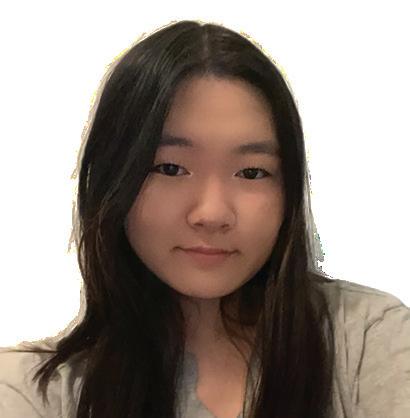


The Something in the Water music festival that was postponed in both 2020 and 2021 due to the pandemic returned this year to the D.C. area. Senior Ariella Mizrahi attended this festival and said that the highlight was watching Tyler, the Creator’s thrilling and long-awaited performance.


“He is one of my favorite artists [that] I have seen before when he went on his own tour so it was really fun to see him in a different setting with a different audience,” Mizrahi said. “His performance was very en ergetic and you could really tell he gave it his all.”
Junior Gili Schisterman also attended numerous concerts this summer, including Halsey, The
Weeknd, One Republic and Chase Atlantic.
One performance that especial ly stood out to Schisterman was One Republic because the outdoor ven ue allowed her to watch the sunset during the show. She said the view really enhanced the energy of both One Republic and the crowd during the performance. Another highlight for Schisterman was how engaging the band was with the fans.
“My favorite moment was prob ably how interactive One Repub lic [was] and how much they love their fans,” Schisterman said. “They were singing and engaging with the crowd so much.”
However, the experience that Schisterman enjoyed the most was The Weeknd concert at FedEx Field due to both the singer’s incredible vocals and the energy of the crowd.
“I really enjoyed The Weeknd because it was a huge stadium and the crowd was so engaging,” Schis terman said. “I also love his music and I had an amazing time with my friend there.”
Senior Coby Malkus attended The Weeknd concert as well and shared Schisterman’s sentiments about the performance. Malkus ex plained that The Weeknd is one of his favorite artists, so attending the concert was a very meaningful expe rience for him.
“It was kind of [a] last minute thing that me and friends decided to do, so it was really exciting to be all in the moment,” Malkus said. “The visuals were really cool, his voice sounded really good and it was a re ally good concert overall.”
The Lion’s Tale Magazine 25
Senior Ariella Mizrahi
Junior Gili Schisterman
Senior Coby Malkus
Voices from the Den
Photo by Ariella Mizrahi at the Weeknd
Photo by Gili Schisterman at Chase Atlantic
Photo by Coby Malkus at Pitbull
Seas the day


 Daniela Abrams Editor-in-Chief
Daniela Abrams Editor-in-Chief
Rehoboth Beach, Delaware





Rehoboth Beach is a three hour drive from the Washington, D.C. area. The beach is known for its bustling board walk full of shops with funnel cakes and fries, as well as its famous Funland amusement park. This beach is perfect for families with younger children as there are plenty of restaurants, both casual and fancy. My personal favorite is Egg, a brunch spot located a mile from the boardwalk. However, Egg does not take reservations and can get extremely busy, which makes visits there challenging. Another fun activity for younger kids is the Funland amusement park. There is a wide variety of rides, ranging from thrilling pirate ships to miniature ferris wheels to teacups. Additionally, Funland is indoors, which makes it the perfect afternoon activity for a rainy day.
Dewey Beach, Delaware
Dewey Beach, located on Rehoboth Bay, is perfect for young adults due to both its convenience and bustling nightlife. Although the beach does not have a boardwalk, it has plenty of fast food restaurants for beachgoers to visit in the middle of their beach day. Locals often consider it the town that never sleeps, as it is filled with vibrant nighttime activities. If patrons want a break from laying on the beach, there are many companies that offer sunset boat rides and tubing on the Rehoboth Bay.
26 September 2022
A guide to nearby east coast beaches that are perfect for a day out in the sun
Photos by Daniela Abrams, LT
Photos by Daniela Abrams, LT
Assateague Island, Maryland and Virginia









While Assateague Island is conveniently only an hour south of Dewey and Rehoboth Beach, the island offers few tourist attractions, making it a more secluded getaway. Many often make a one night camping trip out of the island due to its remote nature. One of the appeals of Assateague is that patrons can drive their cars onto the beach and stay there throughout the day. Furthermore, only 14 miles south of Assateague is Chincoteague Island, which is famous for its wild horses on the beach.
Long Beach Island, New Jersey
Long Beach Island is an 18 mile barrier island on the coast of New Jersey. The island is about a three hour drive from the D.C. area and consists of many small beach towns. The northern part of the island is quiet and the beaches are very wide. This makes it a great summer vacation spot for families. The southern part of the island is full of commercial businesses and restaurants, plus a waterpark that is great for children. My personal recommendation is LBI Table, a brunch spot located in the middle of the island. LBI Table has great pancakes and omelets, and is the perfect place to go before a long day at the beach. Long Beach Island is the ideal place to escape from the bustle of the fast paced D.C. lifestyle for a quick summer getaway even though it can be a further trek than other beach getaways.
The Lion’s Tale Magazine 27
Photos by Eitan Malkus, LT
Photos by Daniela Abrams, LT
Charles E. Smith Jewish Day School 11710 Hunters Lane Rockville, MD 20852
Summer Spotlight
SeniorJonah Gross
“This summer I traveled to Guatemala, which was an incredible experience. While I was there, I did a combination of volunteering and traveling around the country.”





Junior Dalya kma
“I did a medical community service project in Cusco, Peru and met a lot of people from different countries, which was really fun.”
High School Principal Dr. Lisa Vardi went on 17 flights this summer.
LT
the lion’s tale
ADDRESS SERVICE REQUESTED
Did you know?
Photo by Dalya Brickman
Photos by Jonah Gross
n
Spread compiled by Ella Kotok

























 Eitan Malkus Editor-In-Chief
Eitan Malkus Editor-In-Chief












































 Head Coach Kevin Gnatiko
Head Coach Kevin Gnatiko








 Kaylah Goldrich SportsEditor
Kaylah Goldrich SportsEditor







 Daniela Abrams Editor-in-Chief
Daniela Abrams Editor-in-Chief


















